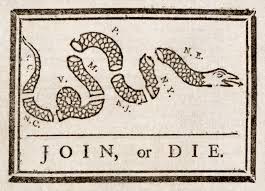On the March to Brandywine: — Part 3 of 10
Washington Heads to White Clay Creek
Congress requested the Executive Council of Pennsylvania to raise 5,000 men and arm them. The state, always loath to make military expenditures, did not acquiesce in any such quantity.
In Wilmington, Washington, now reunited with his generals, called in as much militia support as he could find to help bolster his army.
Washington expected Howe to march directly toward Philadelphia. He sent the Delaware Militia to Christiana Bridge to scout, perhaps to encourage a British advance in that direction, and, if Howe were to move his troops elsewhere, at least this would prevent the locals from supplying the enemy.
At 4 a.m., he ordered a march "which proceeded thro Wilmington, Newport and Rising Sun" and encamped in White Clay Creek, about ten miles north of Elkton.
Washington made camp on the low ground above the northeast side of the creek. The army was tentless because the baggage had been left behind in Wilmington, but the weather was atypically fine and dry. The Virginia Continentals under Generals Greene and Stephen along with Sheldon's horse brigade started from Wilmington at 4 a.m. They passed through Wilmington, Newport, the Rising Sun Tavern at Stanton and camped east of White Clay Creek on the Kirkwood farm. During the day, these troops were visited by Washington.
Why do we assemble in arm? Was it not to protect the property of our countrymen? And shall we to our eternal reproach be the first to pillage and destroy it? Will no motives of humanity, of real interest and of honor restrain the violence of the soldiers? How many noble designs have miscarried, how many victories have been lost, how many armies have been ruined by an indulgence of soldiers in plundering?
-George Washington, who was fully aware of the deleterious effect Continental plundering would have on those neutral and those of wavering support to the patriot's cause.
To the put-upon civilian population, both armies must have seemed like little more than a plague of locusts.
Organizing and Annoying
On Saturday, the 29th, Washington recognized the need for a new group of sharpshooters to replace Morgan's Riflemen, who were fighting in New York with Gates. He sought 700 recruits: 100 from each of seven brigades — the finest marksmen — to form a new corps of light infantrymen under the command of New Jersey General William Maxwell.
Meanwhile, Washington sent out the militia to scout and annoy the British positions farther south.
White Clay to Red Clay
Not confident in the defensibility of his current position, Washington ordered his army to fall back toward Red Clay Creek during the wee hours of the morning of the 30th. Here, Washington arranged his troops for battle.
The troops immediately dug in, building redoubts and entrenchments. Cannon were placed on a rise "for half a mile as thick as they could stand." The new encampment covered a triangular area with the towns of Newport, Marshallton, and Stanton forming the connecting points.
Very "heavy dews fell after sunset" and the exhausted Delaware militia fell back to the Kirkwood farm near White Clay Creek after a busy day harrassing Howe's troops.
Sullivan's division, with Greene supporting, was on the northern flank. Stirling, with General Stephen's and General Wayne's support, was on the southern flank, which was closest to the enemy. This formation allowed Washington greater flexibility in moving divisions with little notice.
Most of the militia was elsewhere: part of Potter's Pennsylvania militia was in Newport, the rest were defending the fords of Brandywine, and Irvine's Continental brigade of Pennsylvanians was in Wilmington to expedite defenses there.
When Washington, Nathanael Greene, and General George Weedon came to Iron Hill, Greene saw what he believed to be a superior spot for a line of defense. It was along the Christiana Creek. The creek was near roads and open country that would facilitate the movement of supply (or retreat). Woods offered protection and the Christiana was a better natural barrier than the Red Clay.
Washington disagreed. The commander did not think the Christiana would do as a main line of defense. Greene was miffed and told Washington that Red Clay Creek was no place to dig in because "you cannot hold your ground if they advance." In part due to the conversation, however, Washington did assign Maxwell's corps to Cooch's Bridge where they eventually did "have an opportunity of annoying them (the British) greatly."
Now, Washington turned his attention to the forts defending the Delaware River. Washington issued directives to drive off all cattle and horses and leave the country as barren as possible.
If there should be any mills in the neighborhood of the enemy, and which might be liable to fall into their hands, the runners [millstones] should be removed and secured ... Grain, too, should be carried out of way, as far as circumstances will admit.
-George Washington (8/31/77)
Washington also considered the possibility of having to retreat and what options he would have. So he posted two batallions of Pennsylvania Militia along fords on the east side of the Brandywine Creek and directed them to "fix upon the best ground for defending those passes." He did this to protect the rear.
On September 1, Washington published good news from Oriskany for all to read: The British and their Indian allies were repulsed from their eastern push into Saratoga, in New York. (This would contribute to the American victory there on October 7.)




